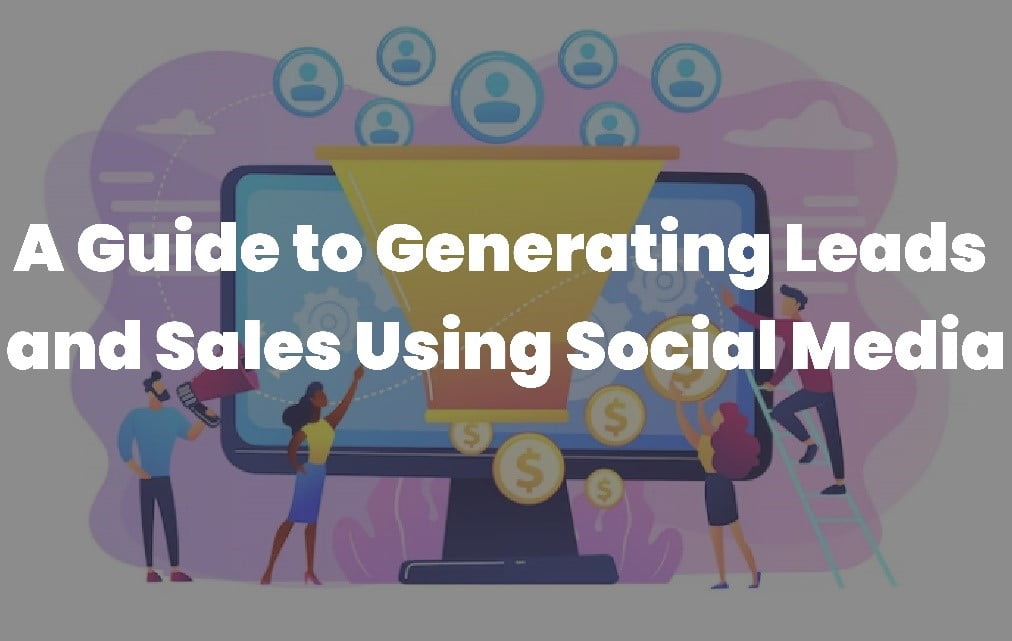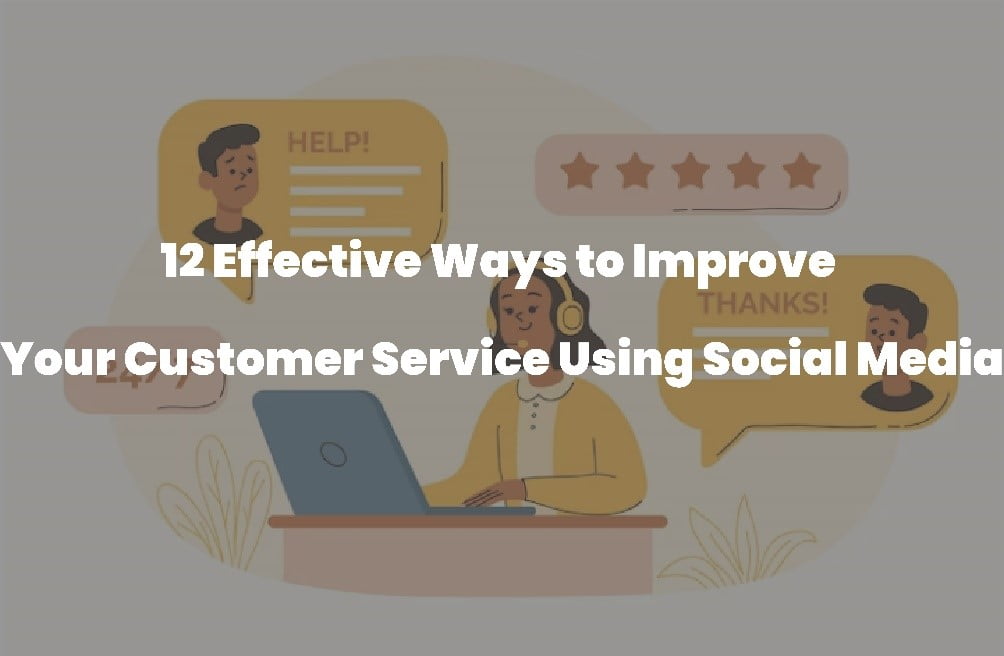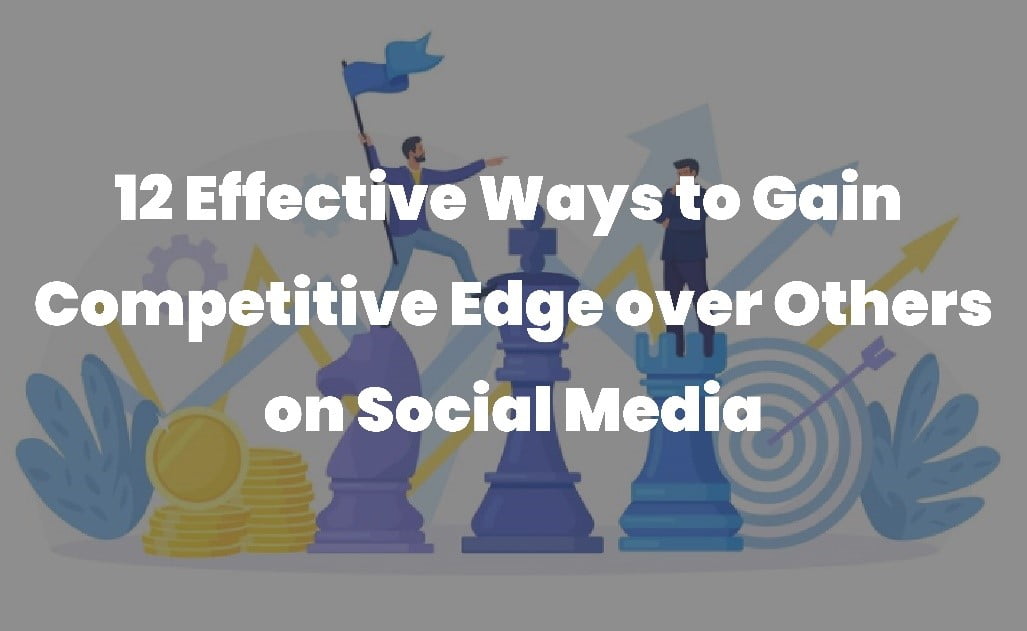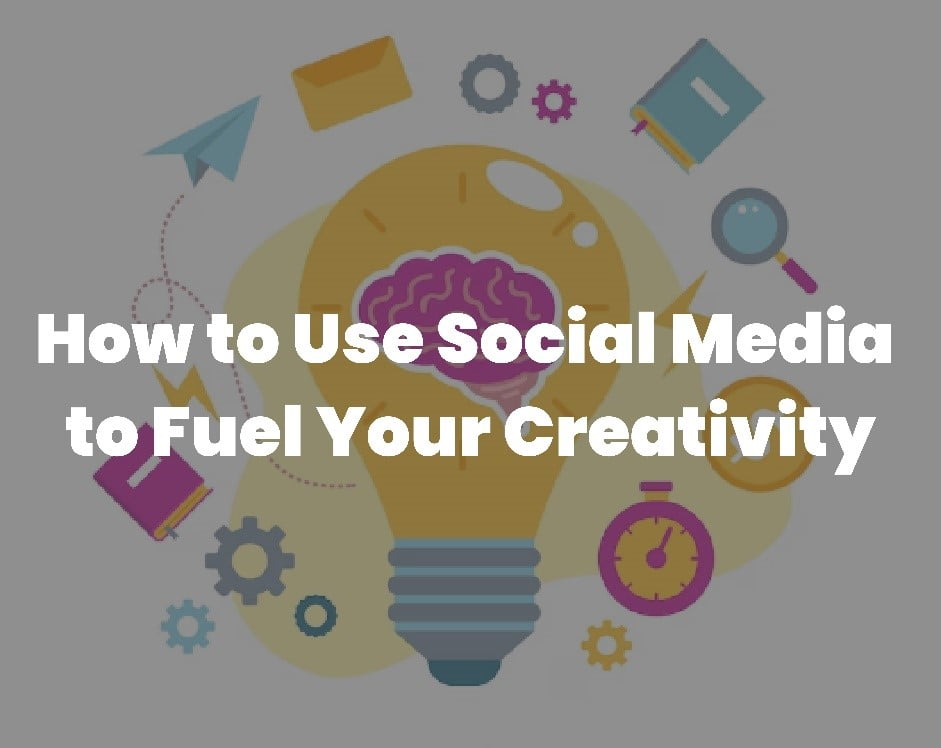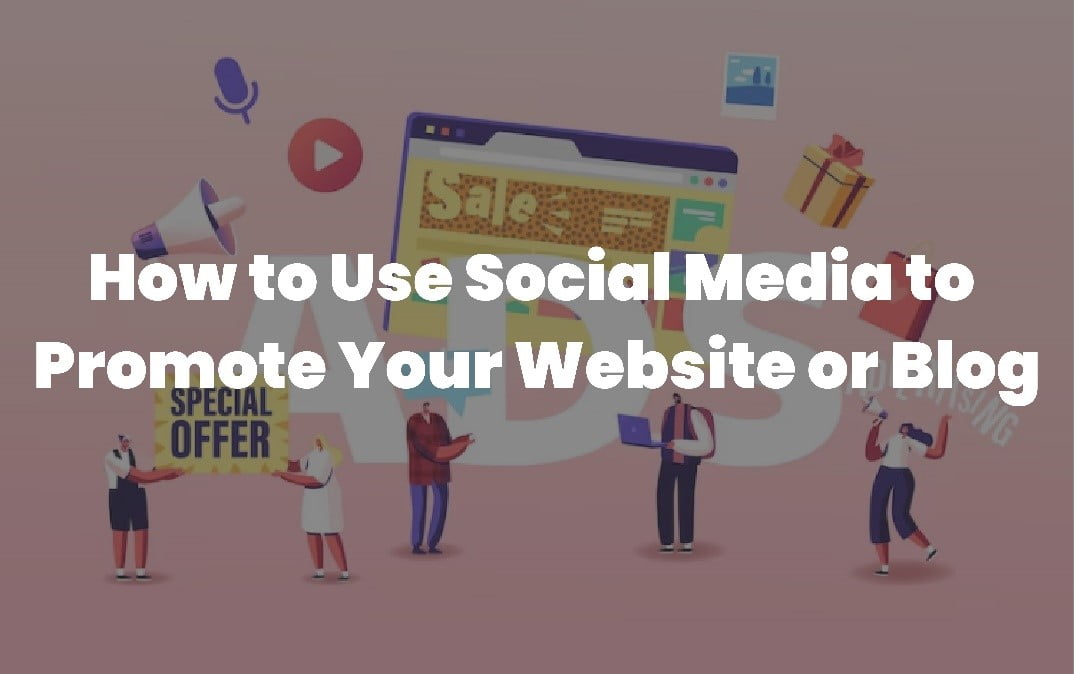A Guide to Generating Leads and Sales Us
Social media is the biggest platform that this world could offer. The initial purpose of social media was to socialize but over time it revolutionized, and from socializing to promote businesses, amusement informational platform.
Using social media platforms to connect with people who are interested in content or services that you have to offer is an excellent way to attract new customers. Additionally, you can also use social media by offering interesting content like infographics, blog articles, and videos that may help you connect with potential customers and convince them to become one.
Are planning to use the amazing potential of social media to boost the growth of your company? If so, you are in the right place. If you want to learn the skill to use social media not only to generate leads but also to turn those leads into committed customers. Then you are in the right place in this article we will teach you how to generate leads and turn them into potential customers with the help of social media. So let’s get started and learn some lucrative secrets.
1. Start with a Solid Strategy
First things first, do you have a clear social media strategy in place? Or do you have an established social media plan in place? This is one of the initial mistakes many companies make they join the social media bandwagon without having a clear strategy in hand. You need a strategy that outlines your objectives, target market, and content strategy if you want to get the most out of your social media initiatives. Consider it your success route map.

The solution to your question is Spend some time establishing your goals. Who are you trying to reach out to? What message are you trying to make? A well-defined strategy will direct your actions and keep you on track. It gets easy to generate leads and sales once you have established your goals.
2. Choose the Right Platforms
Are you overwhelmed by the vast variety of social media platforms available today? Not every platform will be suitable for your business. The key is to identify where your target audience spends the most of their out. Are they on Facebook, Instagram Reel Views, LinkedIn, or Twitter? If you put time and effort into the right platforms it will produce better results.
Study the preferences, interests, likes, and dislikes of your audience for an approach. To find out which social media networks can be most useful for connecting with your potential customers, conduct polls and surveys, or analyze the social media accounts of your competitors.
3. Content is the key
Do you struggle to create engaging content that is appealing and relates to your audience? High-quality content is the key component of any successful social media strategy. From informative blog posts and interesting videos to eye-catching visual graphics, your content should be customized according to your audience’s needs and preferences.

Invest in creating content or, hire an expert if necessary to do it. Consistently deliver valuable content that educates, entertains, or inspires your audience.
4. Build Meaningful Connections
Do you interact with your audience or are you just conveying your message? The use of social media is mutual if you interact with your audience they’ll engage back. Creating genuine connections with your audience will significantly enhance the effectiveness of your lead-generating efforts. Engage actively and show interest in conversations about your niche by responding to comments and addressing any confusion that exists.

Establish a timetable for engagement. Set specific times each day to engage with your audience. Authentic encounters have the potential to convert interested consumers into leads.
5. Use Paid Advertising as a Tool
Are you having trouble organically expanding your audience? Social media platforms have excellent advertising tools that can help you target an audience, their interest, or their combination of behaviors. By investing in paid ads, you can expand your reach and attract potential leads who are genuinely interested in your products or services.

Experiment with paid advertising campaigns. Start with a small budget and then slowly expand your horizon based on the results. Over time, you’ll discover what works best for your business. Paid advertising works best when you are more than a startup.
6. Offer Value Through Lead Magnets
Lead magnets are incentives that you offer in exchange for contact information, allowing you to follow up on potential leads along with a sales funnel.

7. Measure, Analyze, and Optimize
You must track your lead generation and make data-driven adjustments to constantly enhance the way you generate leads and sales campaigns on social media.
8. Taking Particular Care of Your Leads
When the leads reach the buying sales funnel, do you forget about them? You must take care of leads if you want to turn them into paying customers. To keep them interested and involved, send them personalized emails, share the appropriate content, and offer them special discounts on your merchandise.
Use an email marketing automation tool to take care of your leads as a solution. To build trust and increase revenue, tailor your messages and emails depending on their interests and activity, and engage with them every now and then.
9. Implement Public Proof and Reviews
Social proof is an important aspect that can influence potential leads and customers. Sharing evidence from the public and reviews can boost your credibility and conversion rates.
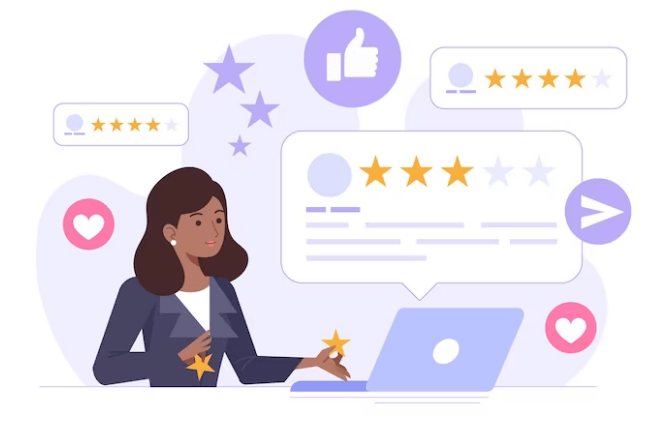
Conclusion
Keep in mind that, in this struggle to understand how social media lead generation work. Success can often come from a combination of strategies that are customized according to your company’s specific goals and objectives. The key to success is to be flexible, repetitive, and persistent. You’ll be well on your way to enhancing the potential of social media and generating significant growth for your company if you continuously check the requirements of your audience and offer helpful solutions. Are you prepared to implement these strategies and see your leads and sales skyrocket? It’s up to you to make the most of this ability.
A Guide to Creating Engaging Social Me
Social media has become the pinnacle of all mediums when it comes to promotion, socializing, or even amusement. With over 3.5 billion users it indeed has become the biggest platform where you can share your expertise and content or even can influence people. But what does it take to create content that’ll make you stand and put a brake on those scrolling thumbs when they see your content or how do you make your content engaging? That sure seems like a difficult challenge! But don’t worry we got you covered. In this article, we’ll be sharing all the tips and tricks that you can adopt to flourish in the world of social media and create highly engaging content.
So what are you waiting for Buckle up as we take you on an educational journey that’ll not only help you create engaging content but also will help you build an authentic fan base.
What Makes Content Engaging?
The secret to grow on social media is creating engaging content. It goes above and beyond the norm, drawing the interest of your audience, provoking engaging conversations, and making a longer-lasting impression. It is crucial when it comes to creating relationships, building affection, and achieving the goals you have on social media sites.
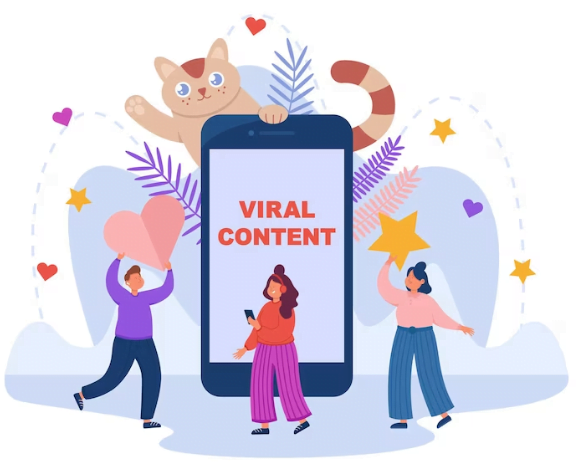
Well, you see everybody loves uniqueness, whether it is materialistic or not that is how human nature is set. So to prosper it is the key to standing out from the crowd, which should be the motivation fueling you while creating your content.
Know Your Audience Inside Out
Engaging content stands upon the foundation of understanding the crowd. Without this knowledge, your content is aimless and purposeless, like a chicken without a head.

How Can You Understand Who Your Target Audience Is?
Create thorough character profiles for the audience that include their age group, their interests, problems, and online behavior. By experimenting with different content up to the point where you finally understand their preferred content
Analysis and feedback: Evaluate social media analytics and seek comments from your audience through polls, quizzes, or face-to-face interactions.
Analyzing your competitors’ content and engagement tactics is important because they may be targeting the same people as you.
Empathy: Get in your audience’s shoes for once and explore, what they care about, and how can you address their requirements.
Once you understand your audience it gets pretty easy as you can finally stick to a niche. You can set your goal now, but also oftentimes create content on different niches to attract new audiences.
Tell an Alluring Story
Human beings have been engineered to enjoy stories. Your hidden weapon when creating content is the ability of storytelling that makes a long-lasting effect on your audience. Don’t take it literally though.

What Are Some Good Story-building Techniques for Your Content?
The Hero’s Journey: Design your content around the basis of the hero’s journey, in which your audience is the hero and your message or product is the weapon by which they transform.
Emotion Elicitation: Use storytelling techniques to evoke emotions. Emotions, such as joy, sympathy, or inspiration, make your narratives stories memorable.
Visual storytelling: Include visuals that improve and enhance the story you are telling, such as pictures, videos, or infographics.
Maintain an overall tone that is consistent with the style and values of your brand.
By developing an emotional connection with your audience through storytelling, you can make your content easy to understand, lasting, and emotionally memorable.
Visual Appearance: The First Impression
A viewer’s attention is usually first attracted to the visual elements than anything else so it is important to create aesthetic visuals. Visually appealing visuals open up the door for more engagement.

How Can You Make Your Content Visually Appealing?
High-Quality Imagery: Use high-resolution images and videos that are clear and visually striking
Use your brand’s colors, typefaces, and design guidelines regularly to keep everything looking harmonious and give it a more consistent branding look.
Create informative infographics that provide complicated details in a way that is easy to understand visually.
Use different types of forms, such as GIFs, carousels, or content that is interactive to mix up your images.
The very first thread that draws the viewer’s attention to your content and encourages digging deeper into your profile is the appearance.
Create Captions and Headlines That Grab the Attention
The first thing that your audience is going to see is your content headline and captions. It has to be short, engaging, and fascinating.

How Can You Come Up with Catchy Headlines and Captions?
Clarity and Conciseness: Convey the content’s value or message simply and clearly, also choose a tone that seems interesting so your audience will know that their feedback is important to you.
Emotion and Curiosity: Use emotionally intriguing words or ask questions that spark curiosity.
Use keywords intelligently by including those that are relevant and relate to the interests of your audience.
A/B testing: Try out several different headlines and captions to see which ones click with your audience the most.
Effective headlines and captions encourage viewers to read or watch more, hence forcing the viewer to engage with your content.
Encourage Interaction and Conversation
Engagement is a two-way path. Encouraging interaction and conversation with your audience helps to create a sense of connection and active participation.
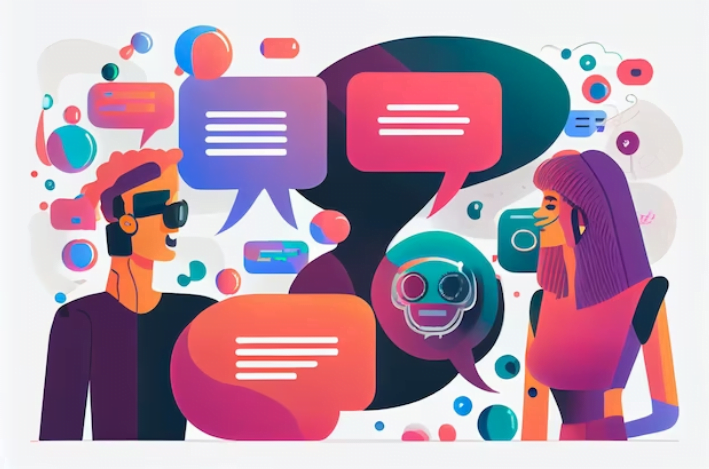
How Can You Make Your Content More Interactive?
Ask Questions: Ask questions related to your content or ask for opinions from your audience, and encourage them to comment.
Challenges and Contests: Host online challenges or contests that provide opportunities for your audiences to engage with your content
Use polls and surveys to get feedback and ideas from your audience.
Reply and Engage: Respond quickly and thoughtfully to comments and messages. Acknowledge and appreciate your audience’s feedback.
Educate, Inspire, and Entertain
It’s much more likely that your audience will be interested and will relate to content that provides quality in the form of education, inspiration, or entertainment.
How Can You Create Content that Provides Information, Motivates, or Amuses?
Share educational and how-tos, and tutorials, or give tips on the topics that are relevant to your niche.
Inspirational Content: Share stories of success, whether it’s your personal experience or stories of other successful personalities, or post motivational quotes that inspire.
Entertaining Content: Infuse humor, storytelling, or engaging narratives into your content.
Variety: Mix up your content to meet your audience’s different tastes and requirements.
Conclusion
Well, social media content doesn’t have to be expensive or time-consuming and it has to be always entertaining. With the tips and tricks given to you, we hope you’ll be able to create content that is not only engaging but also stands out from the crowd.
With the knowledge you possess, it should be pretty easy for you to create content that is diverse, amusing, entertaining, and inspiring. Keep experimenting with different niches till you find your ideal audience that appreciates what you create.
Use proper hashtags, and captions and give narratives to your content so it can take off in the world of social media. Also, keep in mind it takes persistent time and consistency so be patient and consistent with your content.
So what are you waiting for Get going with your content creation and see you on the other side.
13 Effective Ways to Use Social Media to
Are you hosting an event or launching an exciting promotion? What is the best medium to promote this than social media? Social media has evolved into an important tool for spreading information, driving excitement, and promoting attendance or sales in this modern digital age.
In this in-depth article, The methods and strategies that you’ll need, to use social media for successfully advertising your events and promotions are going to be explored in detail. So let’s explore the world of social media-driven events and promotion, from boosting interest, and curiosity to achieving maximum visibility.
The Significance of Promoting Events and Promotions
It’s important to understand the importance of events and promotions in the business world before we get into the details of using social media for promotion. These campaigns provide a wide range of advantages such as
Increased Visibility: Events and promotions provide you the chance to increase the visibility of your business and draw in a larger audience.
They encourage audience interaction and engagement, encouraging the building of relationships with customers.
Increased purchases: While events might promote long-term customer loyalty, promotions can result in quick purchases too.
Market Differentiation: Creative and well-promoted events and promotions can set your brand apart from competitors.
1. Start Early and Create a Buzz
The secret to a successful event and promotion on social media is to start early and build anticipation. When making your event or promotion announcement, don’t wait until the last minute.

Start building short teaser marketing for your future event or promotion weeks in advance. To draw in your audience’s interest, use countdowns, sneak peeks, and exciting teasers.
2. Choose the Right Platforms
Not all social media platforms are created equal. When choosing which social media platforms to concentrate on, take into account the audience you are targeting and the type of event or promotion you are trying to promote.
Look for exactly where your audience is most engaged. In-demand potential social media includes Facebook, Instagram, Twitter, and LinkedIn, but depending on your objectives, platforms like TikTok and Pinterest may also be useful.
3. Create Eye-Catching Visuals
On social media, visual content dominates supremacy over other types. Spend time and money creating intriguing graphics, photos, and videos to go along with your event or promotion announcements.

If you want to create visually appealing advertisements, you can either hire a graphic designer or use design software yourself. Make sure the aesthetics of your brand are reflected in the pictures you use.
4. Create Engaging Content
Engagement is fueled by engaging content. Your event or promotion announcements should be more than just a list of details; they should engage your audience with a compelling narrative.

Create engaging and compelling descriptions and posts that highlight and convey the value of your event or promotion. Create an idea that connects with your audience by using storytelling techniques.
5. Make Use of Hashtags Wisely
The accessibility of your event or promotion on social media can be boosted by using hashtags. To increase your reach, do some research and add relevant hashtags

Solution: To increase your audience, create a unique and original hashtag for your event or promotion and combine it with a popular, niche market, and trending hashtags.
6. Use Paid Advertising as a Tool
The visibility of your event or promotion can be dramatically increased with paid social media advertising. Set aside a budget for targeted advertising campaigns.
To reach your ideal audience, use the targeting options available from the social media advertising platforms. Experiment with different ad formats to find what works best for your goals.
7. Schedule Posts Strategically
On social media, timing is an important aspect as well. Plan your event or promotion postings to go live at times when your audience is most active.

Use social media scheduling tools to plan and automate your postings as a solution. To successfully communicate with a worldwide audience, understand the different time zones and plan accordingly.
8. Host Contests and Giveaways
Giveaways and contests raise interest and promote participation. Include them in your strategy while promoting your event or campaign.

Design contests or giveaways that require participants to engage with your event or promotion content, such as liking, sharing, or tagging friends Offer tempting prizes and gifts to achieve maximum audience involvement.
9. Collaborate with Influencers
Influencers have dedicated followers who trust their recommendations. So partnering or collaborating with influencers can help you expand your event or promotion’s reach and credibility.
Find influencers in your industry or niche who are appropriate for your brand and its goals. Work together to create sponsored content or prizes that highlight your event or promotion.
10. Share User-Generated Content
Encourage your audience to create content related to your event or promotion. User-generated content serves as authentic recommendations.
Create a branded event or promotion hashtag and encourage your audience to share their stories, images, and videos using the specific hashtag. On your social media platforms, share this user-generated content.
11. Calculate and Review Your Efforts
Keep an eye on your key performance indicators (KPIs) and evaluate the success of your social media campaigns in order to improve your event or promotion advertising campaign.
To measure indicators like engagement, reach, click-through rates, and conversion rates, use social media analytics. Based on these data-driven insights, adjust your strategies.
12. Post-event or Promotion Follow-Up
Don’t let the momentum fade once your event or promotion has ended. Post-event or promotion follow-up can help you get feedback and maintain audience engagement and also you can make further changes in the next campaign to make it even better.
Solution: show appreciation and thank your audience for their support and engagement. Share the event or promotion’s highlights, success stories, or exclusive behind-the-scenes content to keep your audience engaged.
14. Learn and Adapt
Every event or promotion is an opportunity to learn and improve. take feedback from your audience and evaluate your weaknesses and strengths, what worked and what didn’t.
To collect feedback, conduct polls, surveys, or post-event reviews. For upcoming events or promotions, use this information to improve your social media promotion strategies.
In conclusion, social media is an effective and powerful tool for advertising and promoting your events and promotions, building interest, and increasing engagement. You may increase the effectiveness of your event or promotion advertising campaigns by putting these strategies into practice and taking an active, creative approach. So, take full advantage of social media to improve the visibility of your events and promotions. With social media the opportunities are endless, and the way is obvious.
12 Effective Ways to Improve Your Custom
In this digital age of the internet building connections and establishing relationships have never been any easier. If you are an online business owner building relationships and connections is a key element. but, how do you keep up with all these customers’ feedback a simple answer is customer services but the real question is can social media help to improve customer services? Absolutely!
Social media has become a potent tool for businesses and firms to improve their customer service initiatives. In this modern era of the swift world where everything happens with the speed of light, Customer interactions are no longer limited to calls or emails; they progressively are happening in real-time on websites like Facebook, Twitter, and Instagram. While we dive into the strategies and ideas for using social media to improve your customer service and create enduring relationships with your audience, we invite you to join us on this fascinating trip. Where you’ll learn all the tips and tricks to enhance your customer service using social media.
The Importance of Exceptional Customer Service
It is important to recognize the importance of offering great customer service in today’s business world before we dive into the details of using social media for customer service. Besides just fixing problems, good customer service not only promotes positive perceptions of the brand but also increases customer loyalty.

- Customer Loyalty: Happy customers are more likely to support your business by making repeated purchases and recommending your products or services to others.
- Brand Advocacy: Happy customers promote a brand’s image through the spread of positive recommendations and bringing in new customers.
- Competitive edge: Providing exceptional customer service can your business apart in an increasingly competitive sector and help you stand above your rivals.
- Interactions with your clients could provide a crucial understanding that can direct strategic decisions and enhancements of your products or services.
Now that we’ve shown the importance of customer service, let’s look into the effective strategies and realistic techniques for using social media as a platform for improving customer service.
1. Embrace the Omni-Channel Approach
Customers today expect smooth service across multiple channels. Using an Omni channel strategy, make sure customer interactions are efficient and consistent. This means including social media in your overall customer service plan, and making sure that concerns and queries are handled effectively across all platforms.

2. Active Monitoring
Active monitoring is the first step in an effective social media customer service:

- Regularly check your social media accounts for mentions, comments, and direct messages.
- Use social media monitoring tools to keep track of brand mentions and keywords relevant to your market.
3. Swift Responses
Being swift is important in the world of social media. You must address your customer inquiries and problems as soon as possible. As shortly as you can after receiving messages or comments, preferably within hours, if not minutes. Even if you are unable to address the issue right away, showing that you are aware of it shows the customer that you appreciate their feedback.
4. Having a Consistent Brand Voice
Keep your brand’s tone consistent throughout all the interactions. Whether you are replying to a compliment or addressing a complaint, your tone and language should be consistent and align with your brand’s identity. Consistency builds trust and strengthens your brand image.
To maintain consistency your brand should have certain rules and guidelines t so the quality can be maintained.
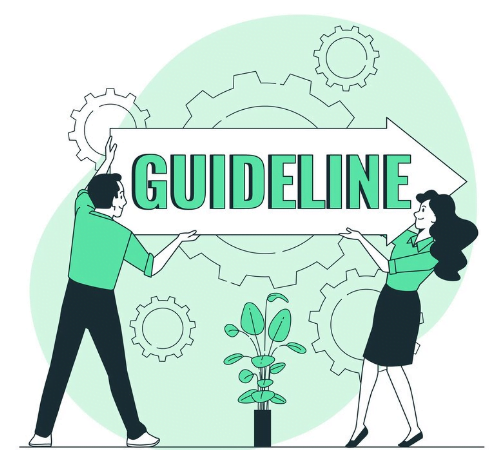
5. Personalization Matters
Try to make your comments more specific whenever you can. Use their names while addressing your clients, make mention of their earlier interactions, and personalize your responses according to their specific issues or inquiries. Customers feel valued and acknowledged when they receive personalized service.
6. Transparency and Honesty
Effective social media customer service relies on the principles of transparency and honesty:
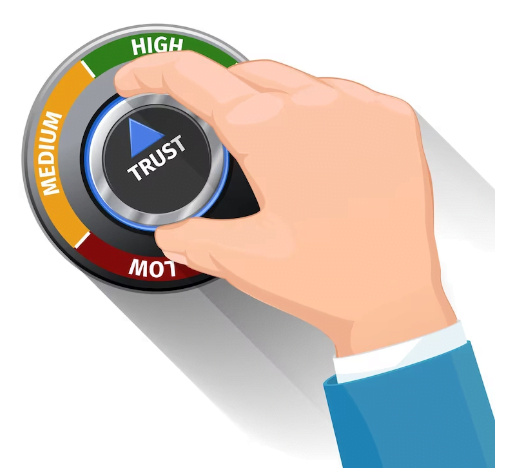
If a problem occurs, acknowledge it honestly and transparently.
Inform them of any issues or delays in finding solutions to issues.
Speak naturally; stay away from scripted comments and technical language.
7. Take Disputes Offline When Necessary
While many customer issues can be addressed publicly, sometimes there can be situations where sensitive information or discussions need to be discussed privately. In such cases, ask to continue the conversation by email or direct messages right away to protect your privacy.
8. Empower Your Team
Give your customer care staff the authority to make choices and handle problems swiftly. Prevent unnecessary circumstances that escalate because they may frustrate the customers. Give your employees the knowledge and tools they need for successful responses to handle a wide range of inquiries effectively.

9. Keep up with the Trends and Gather Feedback
Keep an eye out for trends or repeating issues relating to inquiries from clients on social media. This understanding might give valuable insight into areas that might need improvement or more attention. Additionally, constantly ask for consumer feedback to see how satisfied they are with your services.
10. Create Educational Content
Create and share educational content that addresses frequently asked customer questions. This may consist of manuals with instructions, FAQs, or instructional videos that enable users to look up answers on their own. The number of repetitive questions reduces while also improving the client’s experience.
11. Showcase Client Success Stories
On social media, highlighting client success stories can serve as a potent tool for building loyalty and trust. Share client success stories, case studies, or user-generated content that shows how satisfied customers have used the products or services you provide in everyday circumstances.
12. Examine and Improve
Continuous improvement is key to enhancing your social media customer service strategies. Regularly assess your performance by tracking metrics like response time, customer satisfaction scores, and problem-solving rates. Use these pieces of information to identify areas that could be further improved.
Conclusion
Businesses have to understand the important role that social media serves in offering great customer service in this world of the Internet where customers can voice their opinions with just a click. You may improve the customer experience and increase brand loyalty by implementing an Omni channel strategy, continuously monitoring interactions, responding quickly and genuinely, and introducing personalization and transparency.
Furthermore, social media provides you an opportunity to demonstrate the commitment you have to customer satisfaction, create positive relationships, and convert customers into loyal customers along with acting as a forum for addressing problems. Remember that every interaction is an opportunity to leave a lasting impression and build your brand’s reputation as a customer-focused powerhouse while you set out on the road of improving customer service through social media.
12 Effective Ways to Gain Competitive Ed
With the rise of social media platforms and their users every day, it has become crucial for one’s survival to stay ahead create content, or offer unique or compelling services.
Unfortunately Delivering content or services of high quality isn’t enough to keep ahead of the competition in the highly competitive business world of today. In order to achieve a competitive edge, social media has been recognized as a powerful tool. It offers businesses unique opportunities to connect with their audience, drive innovation, and ultimately stand out in the market. We’re going to explore strategies and tricks in this article to help you make the most of social media to position yourself a step ahead of others in your niche.
How Social Media Can Give You a Competitive Edge?
Social media is no longer just a tool for marketing; it has evolved into an extremely important area for companies looking to gain an edge over their rivals. You can use social media to your advantage in the following ways:

Audience Insights: Social media offers an extensive amount of audience data, giving you a deeper understanding than ever before of your customer’s preferences, habits, and challenges.
Direct Engagement: It provides a direct means to interact with your audience by, getting feedback, addressing their issues, and building connections that encourage support.
Brand Visibility: Social media increases the visibility of your brand, allowing you to connect with more people and take up an additional share of the market.
Analyzing your competition will give you an understanding of their strategy, audience engagement, and content performance, allowing you to alter and improve your content or services
Innovation Hub: It provides an opportunity for showcasing your innovations, and keeping up with the industry trends while positioning your brand as a market expert.
Now let’s dive into the strategies that will not only help you to use social media to your advantage but also surpass the competition:
1. Know Your Competitors Inside and Out
To gain a competitive edge through social media, you must first understand your competitors. Who are they, and what are they doing on social platforms? Analyze their social media presence, content strategies, engagement tactics, and audience traits.
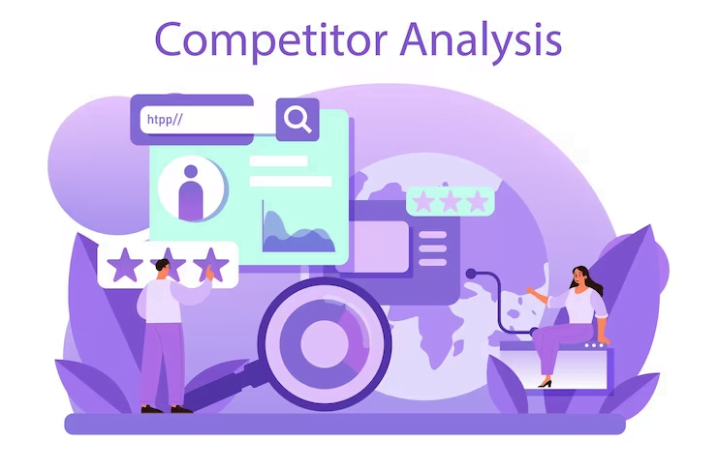
Conduct competitor research in order to identify the strengths and weaknesses in their social media strategies. Look for opportunities to make your brand stand out by filling in the gaps or offering something special or unique.
2. Define Your Unique Selling Proposition (USP)
Having a distinct and compelling USP helps you to stand out from the competitors in a highly competitive market. How can you effectively communicate the distinctive qualities of your brand on social media?

Create a clear and compelling USP that emphasizes what makes your company unique as a solution. Use social media to consistently strengthen your USP through content, messaging, and branding.
3. Create a strategy for your Targeted Audience
Your social media followers are not just the number of people who follow you, they are your potential customers and promoters of your brand. Are you effectively targeting the right audience that aligns with your brand’s goals and values?

Create detailed audience profiles based on the interests, demographics, and habits of the audience you are targeting. Make sure that your engagement and content tactics are appealing to the audience you are targeting.
4. Keep up with the Market Trends
You must keep up with market trends and changes if you want to outrun your rivals. What are the most recently developed innovations, cutting-edge technologies, and customer preferences in your industry?

Follow industry publications, join relevant online communities, and engage in conversations with influential people in your targeted market. In order to establish your brand as an expert in the field, share your thoughts and opinions on social media.
5. Actively Engage with Your Audience
Social media is a two-way means of communication rather than just a broadcasting platform. Customer ties are strengthened and a sense of community is fostered via audience interaction.
Respond to comments, messages, and mentions quickly and thoughtfully. Encourage discussions, ask questions, and actively participate in conversations related to your market or niche.
6. Create Top-Notch, Valuable Content
Social media posts from you should not just be filler; instead, they should be useful, educational, and relevant to your audience. Are you constantly providing your audience with captivating content?
Create a content strategy that takes into account the needs, preferences, and objectives of your audience. Share a variety of stuff, including user-generated content, infographics, videos, and articles.
7. Keep an Eye on and Evaluate the Actions of Your Rivals
It’s essential to monitor your competitors’ social media activity if you want to stay ahead. What fresh initiatives are they launching, and how can you adjust or react?

Use social media monitoring tools to keep track of the mentions, interactions, and content performance of your competitors. Examine their successes and weaknesses as you develop your approaches and strategies.
8. Strategically use Paid Advertising
Due to its capacity to target specific audiences and reach a larger audience, paid social media advertising can give your brand a significant competitive edge over others. Are you using paid advertising effectively?
Invest in paid advertising campaigns that align with your objectives and goals. To reach those potential customers who most likely will convert, target specific groups of people, and know their interests, and their actions.
9. Encourage the Creation of User-Generated Content
Take advantage of the content creation abilities of your happy customers. UGC not only decreases your workload in terms of content generation but also builds trust among potential consumers.
Encourage customers to share their thoughts and their experiences with using your product or service. Create user-generated content (UGC) campaigns, competitions, or rewards to encourage users to create content that promotes your business or brand.
10. Embrace Emerging Platforms and Technologies
The social media environment is constantly changing as new platforms and technologies emerge. Being open to exploring and utilizing emerging technologies is essential to stay ahead of others.
Stay open to trying new platforms and technologies that align with your audience and goals. Embrace Emerging Platforms and Technologies Try out tools like live streaming, AR filters, and content that is interactive.
11. Evaluate and Improve Your Tactics
Keeping a competitive edge requires constant improvement. Monitor your social media performance frequently and change your approach in response to information and analysis.
Track key performance indicators (KPIs) including engagement rates, conversion rates, and ROI with social media analytics. To improve your strategies and methods, consider these insights.
12. Collaborate and Network
Building strategic partnerships and collaborations can provide you with unique opportunities for growth and innovation. Are you networking and collaborating effectively on social media?
Identify potential collaborators, influencers, or like-minded businesses in your industry. Reach out and explore mutually beneficial partnerships that can expand your reach and influence.
In conclusion, having an advantage in today’s business world demands a well-planned and active strategy for social media. You can use social media to get ahead of your rivals, build stronger bonds with your clients, and achieve success over the years by putting these strategies into use and having an approach of constant development and change. So, are you willing to capitalize on social media’s potential and establish yourself as an expert in your niche? there an boundless opportunities and the path will be clearer.
10 Effective Ways to Protect the Reputat
Your brand’s reputation is a priceless asset in the age of the internet, where data is readily accessible and public opinion carries immense weight and is very influential. Social media, having its ability to spread information and conversations like wildfire, plays an important role in influencing how society sees things.
In these times if you are a business owner and you are wondering how can you protect your brand’s reputation? Well, don’t worry in this article we’ll be highlighting all the important tricks and strategies on how to use social media as a defense to preserve and improve the reputation of your company.
The Significance of Brand Reputation
It’s important to understand the importance of your brand’s reputation before we dive into the strategies:

Customer Trust: Customers are more likely to pick your brand over rivals when you have an excellent reputation.
Customer Loyalty: A good reputation helps you build customer loyalty, which results in your brand getting into recommendations and repeated purchases with the customers.
Crisis Resilience: A solid reputation can serve as a barrier during crises, protecting your brand and allowing it to survive the storm of crisis and return stronger.
Competitive Advantage: In a jam-packed market, standing out with a great reputation encourages people to choose your products or services over others.
1. Pay Attention
The foundation of reputation management is active listening:

- Keep an eye out for brand mentions, comments, and direct messages on social media networks.
- Use social listening techniques to keep tabs on audience attitude, industry
trends, and new challenges.
- Participate in conversations actively to quickly resolve questions complaints, and criticism.
- You can identify potential challenges early and take the necessary action by listening carefully.
2. Build a Strong Online Presence
A solid basis for managing a reputation can be found in building a strong online presence:
- Keep your profiles on the major social media sites active and up to date.
- Showcase the values, goals, and dedication to the customer satisfaction of your brand.
- Share interesting and important stuff with your audience regularly.
- Your brand’s authenticity and trustworthiness are strengthened by having an active and effective internet presence.
3. Create an Emergency Crisis Strategy
Planning is the key to effectively managing reputation crises:

- Make a thorough report on the crisis and build a response strategy that outlines roles, duties, and methods for interaction.
- To make sure your staff is ready to deal with emergencies, conduct regular stress simulations.
- When handling crises, embrace transparency and acceptance while notifying people.
- Having a strategy in place helps minimize the effects of problems and helps your brand’s speedy recovery.
4. Encourage Genuine Engagement
Trust and loyalty are promoted by genuine engagement:

- Genuinely and quickly respond to all comments, questions, and interactions.
- Encourage respectful discussion even when you are the target of criticism.
- Thank them for their positive comments and address their issues with empathy.
- The relationship between your brand and its audience is strengthened by genuine and active participation.
5. Tell Your Brand’s Story through Social Media
An effective method for shaping your brand’s image is storytelling:
- Share your brand’s journey, values, and achievements through compelling stories. Sharing your stories will help you build authenticity which eventually will help you build your brand’s reputation.
- Share success stories and positive experiences for customers.
- Show that you have committed yourself to responsible behavior and social responsibility.
- By sharing your brand’s story, you can humanize your company and build ties and connections with customers.
6. Protect Customer Data
The reputation of your brand can be badly harmed by breaches of security. Protect customer data by putting in place strong security measures. These cyber-attacks can result in data leaks of your audience which can cause trust issues and drastically affect your reputation.

Invest in cybersecurity measures to protect and preserve your customer data. For the safety of your audience, express your commitment to protecting their information.
7. Make Use of Tools for Managing Online Reputation
Increasing online reputation streamlines the process itself:
- Invest in software that monitors online reviews, analysis of feedback, and brand mentions.
- Assess feedback from customers across different platforms and take the proper action.
- To improve your reputation you can use management initiatives, use data-driven insights.
- These tools provide immediate real-time feedback and useful data.
8. Address Negative Feedback Politely
Negative criticism is inevitable, but how you respond to it is extremely important:

Be professional and polite in your response to every one of the negative feedback or reviews even if they are false accusations or reviews.
Avoid arguing in front of others; instead, try to resolve the issue privately.
Straightforwardly addressing complaints will show your brand’s dedication to your customer’s happiness.
Dealing with criticism shows your brand’s commitment to continuous improvement.
9. Encourage Employees to Promote Brands
Your employees can be powerful advocates for your brand:
Encourage team members to post positive feedback and brand-related content on their social media profiles.
Give training and provide guidelines to your employees on responsible and inspiring online presence.
Acknowledge and reward your employees who actively promote your brand online.
Support from staff members enhances the reputation and visibility of your brand.
10. Monitor and Improve
Managing one’s reputation is a continuous activity.
Analytics can be used to monitor audience growth, their opinion, and engagement on social media.
Regularly assess the outcomes of your reputation management strategies.
Alter your strategy as you get new data and new information, hence improving your efforts for the best outcomes.
Your handling of reputation will keep striving to be effective and relevant through tracking and adjusting.
Social media works as a guardian for your business’s reputation. You can protect your brand’s reputation by actively listening, building a strong online presence, developing an emergency response plan, encouraging authentic engagement, and storytelling, using online reputation management tools, nicely handling negative feedback, empowering your employees, evaluating results, and altering as necessary.
Always keep in mind that maintaining the reputation of your brand takes careful planning, honesty, and sincerity. Every social media interaction is an opportunity to strengthen your brand’s reputation and create lasting loyalty with your audience. Bear in mind that you can influence views, thoughts, and opinions and make sure that your brand remains a trusted and respected entity on the internet.
How to Use Social Media to Fuel Your Cre
Social media has become the greatest platform where you can showcase your creativity and meet other creative people as well. It is the only platform where creativity has no bounds. Whether it’s a reel, an image, digital art, or a painting you can share your creative side in tons of manner. Social media is an empty canvas and you can fill it up with your colors of creativity and imagination.
In this era of the digital world probably very creative and unique content would blow immensely, but how can one be creative when the creativity juice is running low? Or how can you stay consistent and creative?
The algorithms of the social media platform automatically drive content to people who likely share the same interests.
The social media platform can help you create creative content all you have to do is pick a niche understand your audience and the rest we’ll help you to adapt strategies and tricks that will help you get creative using social media.
Create an Engaging Online Profile
You must carefully design your online persona on social media to reflect your creative soul, just like an artist picks his or her canvas. Social media platforms like Instagram, Pinterest, TikTok, and YouTube provide colorful environments for you to experiment with your ideas. Create an interesting profile picture and a bio that clearly explains your love for creative passion, to assist you with getting things going.

Engaging with Other Creative People
Building connections with other talented individuals is the initial step on your journey to using social media for expressing your creativity. Find and follow writers, musicians, artists, and other creators who inspire you. Like, share, and comment on their postings to express your interest in their work. Along with promoting your content, interacting with like-minded people could lead to long-term relationships and collaborations.

Joining Groups and Communities
The social media network is a legitimate goldmine of creative groups and communities. Several groups that are dedicated to different artistic mediums and creative endeavors can be found on platforms like Facebook and Reddit. Join these groups to talk about ideas, show off your work, and get helpful feedback it can be in the form of criticism so act professionally. You could also come across inspiring motivation as well as encouragement in these online communities.
Showcase Your Creative Workflow
The ability to display your creative process is one of the most appealing features of social media for creative expression. If you have a time-lapse video of your artwork coming to life or a taste of your songwriting process, or simply share behind-the-scenes and bloopers while creating your content, share it with your audience. These sneak peeks give your viewers a deeper understanding of your creative objectives while also attracting them as well.

Sharing Your Content
Your social media platforms are the perfect place for promoting your creative work. Share any work of art that you are excited about, including poetry, music, and artwork. To make sure your work glows, use high-quality graphics or music. Including relevant hashtags will assist your content in becoming more visible and help it reach a bigger audience with the same taste.
Narrating Your Journey
Every artist has a unique journey and your fans would love to be a part of your journey, which is unique to every artist. Create interesting stories based on your artistic experiences. Share the difficulties you overcame, the motivations behind your efforts, and the achievements that you made. Your online profile adds depth when you share personal stories, which also help you reach a wider audience.

Create Unique Collaborations
Social media is a hub of creative collaboration and innovation. Reach out to fellow creators whose work you enjoy or to spice up the experiment with the complete opposite of your style. Whether it’s a combined art exhibition, a musical composition, or a co-authored blog, collaborative efforts can breathe new life into your creative journey and introduce you to new audiences.

Maximize Your Influence with Multimedia
Don’t limit your creative expression to one format. Social media allows you to explore various multimedia options. To grab the attention of your audience, make interesting videos, time-lapses, animations, or interactive postings. Your storytelling can be enhanced and the content that you provide may become more appealing by using visual and audio elements.
Using Feedback and Positive Criticism
Positive criticism is an essential tool for growth and improvement. Encourage your audience to comment on your work, share their thoughts on your work, and be open to feedback. Positive feedback encourages your ability to innovate and helpful criticism could direct you in the right direction and make progress.
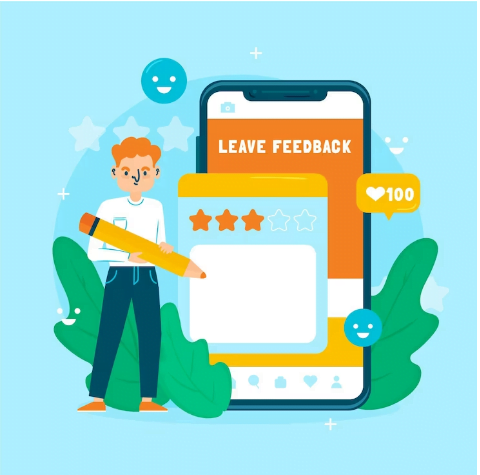
Keeping a Respectful and Professional Tone
While social media can be a creative outlet, professionalism is always necessary. Always act with decency and respect in your interactions with others. Be mindful of how you communicate with your audience and be attentive to their feedback. Your online etiquette reflects how dedicated you are to both your audience and your profession.
Conclusion
In conclusion, social media is a vibrant canvas for your creative mind and soul, rather than just a platform for selfies and updates on your status. You may achieve your artistic potential by developing an engaging online profile, interacting with other artists, and joining innovative groups and communities. To engage with a wider audience, show your creative process, share your works, and talk about your experience. Work together, explore multimedia, and take criticism to improve the quality of your work. Social media is your platform, so let your creativity shine. so what are you waiting for, explore your creative side and see you on the other side.
How to Use Social Media to Promote Your
In today’s modern era of social media, everything can be achieved with the help of social media whether it’s to promote your brand or to use it for amusement you name it.
It is essential to post entertaining, suitable, and engaging material on social media to increase traffic to a website or blog. Using hashtags and tagging others in your posts is another way to improve visibility and increase the probability of interacting with more people.
But the question you may be wondering is can social media be used to drive traffic to a website or blog?
Well, you are in the right place in this article we’ll share all the tricks and strategies that’ll help you generate traffic to your website or blog.

How Important is Website Traffic?
Website traffic is the blood life of your website or blog. It is the number of people who have visited and browsed through your website or blog. More traffic increases visibility, audience reach, and the likelihood of meeting your website’s objectives, like spreading your message, and generating leads, and content revenue.
Choose Your Social Media Platforms Wisely
With so many social media sites readily available, it is key to pick the ones that are suitable for your niche, consumer audience, and type of content. Every platform is different and has certain advantages over others.
How Do You Choose the Right Social Media Platforms

Analyze your target audience to find out which social media sites they like to use. Where do they mainly spend their time the most?
Content Compatibility
Look at the type of content you create. Visual content may perform well on platforms like Instagram or Pinterest which were created for visual content, while informative articles may find a home on LinkedIn or Twitter.
Competitor Research
Analyze where your competitors are active. If they’re successful on a particular platform, then choose the same platform as it may be the right platform for your niche.
Resources and Capacity
Assess your resources and capacity for maintaining your online presence on different platforms. It’s better to excel on a few platforms than to spread yourself too thin or because you do not know what platform may help you to flourish your success
Why is Choosing the Right Social Media Platform Important
Selecting the right platforms assures that your efforts are put in the right place where your target audience is most likely to engage with your content.
Optimize Your Social Media Profiles
Your social media profiles serve as the digital store for your website or blog. Optimizing them is the first step to attracting potential visitors. If your profile is engaging enough, then only it’ll motivate the user to visit your blog or website.
The online shop for your website or blog is represented by your social media accounts. The first step in luring potential visitors is to optimize them.
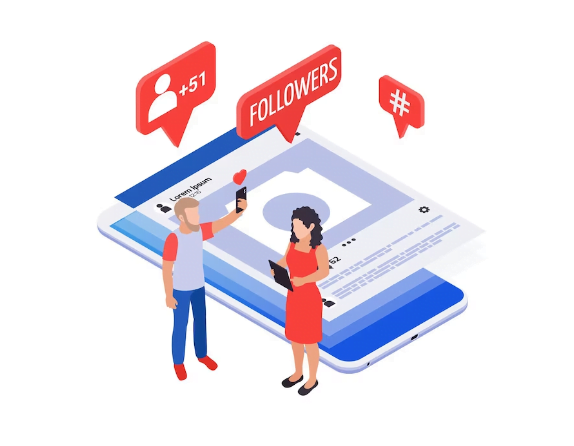
How Can You Make Your Social Media Profiles More Efficient?
Use the same profile picture, cover photo, and bio on all platforms to maintain consistency and authenticity in your branding. Make sure they represent your website and brand identity.
A concise and straightforward bio should highlight your niche and your value proposition, and include a link to your website or blog.
Use suitable keywords in your posts and bio for better accessibility.
Give accurate contact details such as your website’s URL and, if necessary, your email address too.
Why is Profile Optimization So Important for Traffic Generation?
An optimized profile not only shows professionalism but also makes it easy for potential visitors to find and connect with your website or blog without any problem.
Consistent Posting and Scheduling
Your social media publishing schedule should be consistent. Inconsistent posting can result in irregular traffic patterns or even less traffic generation.

How Do You Keep a Consistent Posting Schedule?
Make a content calendar that outlines what and when you’ll post on each platform. Prepare your content in advance. This will help you to keep an account of what has been posted so you don’t double-share your content and also an organized table is easy to work on.
Scheduling Tools
To automate your posts, use social media scheduling tools like Buffer, Hoot Suite, or Sprout Social.
Post when your targeted audience is most active to maximize engagement. To track peak hours, analyze platform insights.
Renewable Content
Include evergreen stuff means your content should not be outdated Keep with the trends and keep your content spicy. Also, your content should not be outdated quickly keep up with the things that don’t get down easily. This guarantees that previous postings will continue to receive traffic.
Why is Maintaining a Consistent Posting Schedule Important for Driving Traffic?
Consistency builds trust with your audience, which makes them more likely to return to your website or blog for fresh content.
Interact and Engage with Your Audience
The use of social media is reciprocal, so basically, it’s a two-way street whatever you give it, it’ll give you back. By interacting with your audience, you can build relationships and get them to visit your blog or website frequently.
How Can You Effectively Interact with Your Audience?

Respond Quickly
Swiftly and politely respond to comments, messages, and mentions.
Encourage conversation by asking questions or requesting feedback on subjects that are associated with your area of knowledge and interest
Live Interaction
Host live events like live sessions or Q&A sessions to engage directly with your audience in conversation.
Share content created by different users that is relevant to your website or blog by sharing this kind of stuff that is created by your audience it’ll encourage your audience to engage more with your content and also will help it grow by sharing on different platforms.
Measure and Analyze Results
It is very important to keep track of whether or not your social media activities are performing well and paying off or not. So you can alter your strategy depending on data-driven insights thanks to it.

What Metrics Should You Monitor for Evaluating Your Performance on Social Media?
Click-Through Rate (CTR)
Measure the percentage of visitors who visited your website or blog after clicking on one of your social media links.
Analyze your social media postings’ likes, shares, comments, and general engagement using engagement metrics.
Track your website’s conversion rate to see what percentage of social media traffic is converted into customers who signed up for your newsletter or bought something.
Traffic Sources
Use website analytics tools to track the social media networks that are driving visitors to your website.
Data-driven insights enable you to optimize your social media strategies, focusing on what works best to drive traffic to your website or blog.
How to Master the Art of Influence? Unco
In order to be a successful social media influencer it has become very crucial to understand the complexity of psychology and its influence in this steady world of social media. Today, we are going on a journey into the center of this digital universe to learn how the human mind engages with the virtual worlds that we travel through daily. Being able to build perceptions can create connections, and promote engagement. The only way to achieve this is by mastering social media psychology as we will examine this topic in depth and learn the strategies and tricks that will help you achieve social media campaign success as we explore this interesting topic in depth.
We will be exploring different psychological techniques that can be used to engage and connect with your audience, and how to use them effectively. We will also discuss the importance of understanding the psychology of social media and how it can be used to drive engagement.
Finally, we will discuss the different tactics and strategies that can be employed to ensure success in your social media campaigns.
Basically, we’ll be teaching you how to be a master manipulator…but in a nicer way. : P
The Psychology Behind Social Media
Social media growth has become an integral part of our lives, and it has a profound impact on our psychology. Understanding the psychology behind social media can help us comprehend why we behave the way we do on these platforms and the impact it has on our mental wellbeing
Social media platforms have indeed become an integral part of our lives, with sites like Facebook, Twitter, and Instagram being used daily. However, it’s important to keep in mind that the algorithms used by these sites are designed to serve real people who are looking for value and significance amidst the sea of content available.

So, what motivates users to engage with content on social media? The answer lies in offering genuine value to them, whether it’s in the form of useful information, entertainment, or inspiration. By doing so, you can create a lasting relationship with your audience, one that goes beyond just manipulating algorithms.
Understanding the Mental Image
When it comes to social media, understanding your audience is like solving a tricky riddle. Once you figure it out, success becomes easier to achieve. Essentially, it’s about getting into the minds of your audience, understanding their needs and desires, and then using that knowledge to influence their thinking and decision-making. To do this successfully, it’s important to thoroughly understand the psychology of your target audience.

So, how can we solve our audience’s psychological puzzles?
Understanding the psychology of your consumers can have a major impact on their behavior. By understanding their mental judgments, emotional drivers, and decision-making processes, it becomes easier to create content that truly resonates with them. Rather than trying to manipulate your audience, aim to match your communication with their intrinsic motivations and interests. This approach is more likely to result in genuine engagement and long-term loyalty.
The Power of Emotion
As we know, human behavior can be influenced by emotions, and this fact holds for social media as well. Social media platforms are loaded with content that evokes emotions like humor, empathy, or awe, and such content is more likely to be shared and remembered. Users of social media are often attracted to content that resonates with them or piques their interests.

Why Do Emotions Matter So Much in Social Media Content?
It is very important to understand the psychological principles that direct emotions to maximize their impact. By utilizing the pleasure of anticipation, the appeal of uniqueness, or the comfort of nostalgia, one can create content that stimulates these emotions and observe how it connects with the audience on a deeper
The Art of Storytelling
Telling a story is an important aspect of successful social media marketing. People naturally bond over stories and find them inspiring because they can relate to them. By incorporating stories into your social media approach, you can create an engaging narrative that connects with your audience.
What Makes Storytelling Such a Powerful Marketing Strategy in Social Media?
Well, you can create different themes for your stories that resonate with the interests and desires of your audience. Sharing personal experiences, success stories, and user-generated content that highlights the benefits of your product or service can help build a strong relationship between your brand and its target audience. Ultimately, storytelling is an effective way to add value to your brand and create lasting connections with your audience.
Building Trust and Trustworthiness
Building trust in today’s digital world can be a daunting task. However, it is essential to establish trust and credibility with your audience if you are looking for long-term success on social media. One of the most effective ways to build trust is by using psychological techniques that encourage trust and faith.
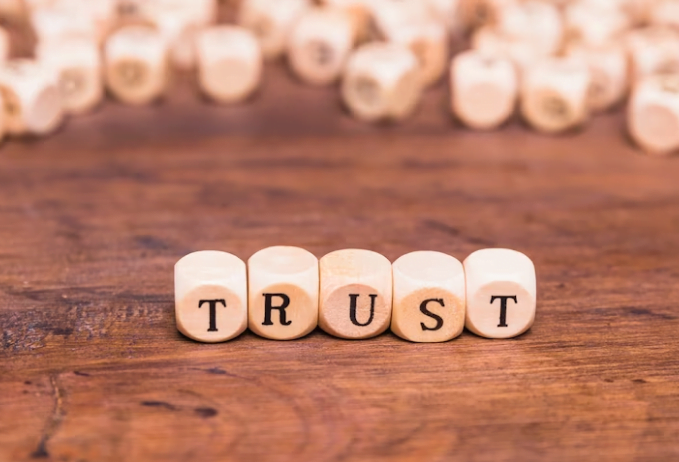
Out of all the available options, the implementation of social verification is considered the most important. By showcasing encouraging comments, suggestions, and recommendations from satisfied clients, you can
Increase the likelihood of people trusting and believing in your brand. When potential customers see that others are having a positive experience with your brand, they are more likely to trust and engage with it.
In addition to social verification, maintaining consistency in your messages and following through on the commitments you make is crucial. Inconsistency can decrease confidence, which is why it is essential to be consistent in your communication and actions. By being consistent, you can establish trust and credibility with your audience, leading to long-term success on social media.
The Science of Engagement
Engagement is crucial on social media, as it is the key factor that determines the success of your content. The effectiveness of your content is evaluated based on the level of engagement it generates. To increase engagement, it is important to understand the psychological factors that drive user interactions.
So, why do consumers interact with the content on social media?
One effective strategy is to use the concept of reciprocity. By providing valuable information that resonates with your audience, you can foster a sense of connection with them, encouraging them to engage with your content or share it with others. Additionally, creating a sense of urgency or scarcity may motivate users to act quickly, leading to higher engagement rates. Offering time-sensitive deals or exclusive content can help to achieve this goal. Engagement is crucial on social media, as it is the key factor that determines the success of your content. The effectiveness of your content is evaluated based on the level of engagement it generates. To increase engagement, it is important to understand the psychological factors that drive user interactions.
Establishing Authentic Connections
Authenticity is crucial to succeed in social media in the long run. It is a rare gem that stands out in the middle of the noise and demand of social media. Being honest and transparent in your interactions is crucial for authenticity. It’s about creating a brand and establishing a real connection with your audience.

Why is authenticity so important in the world of social media?
Engaging with your followers on a genuine level is essential to form real bonds. Respond to their questions, address their concerns, and show gratitude for their feedback. Share a sneak peek of your brand’s growth while showcasing the people and experiences that contributed to it. Authenticity promotes a supportive environment and cultivates trust.
Conclusion
It’s important to understand the psychological basis that drives user conduct to succeed in the constantly changing environment of social media. By utilizing the power of influence and creating content that connects with human psychology, we can change perceptions, create genuine connections, and increase engagement.
So, how can we apply these psychological principles to our social media strategies today?
Remember that social media is not just an electronic medium, but a reflection of our shared experiences as human beings. By adopting psychological principles, we can watch our social media strategies develop into powerful tools of influence and build connections with ease.
Organic Ways to Grow Your Social Media A
A lot of people find it tempting to take shortcuts in the massive ocean of the social media world, where millions of people compete for popularity and attention. However, the quality of relationships and engagement is greater than the quantity of followers is what truly defines a successful social media account. Join us as we you the practice of building your social media account organically without turning to paid likes and followers. We’ll discuss different steps, insights, and strategies that can help you build a genuine social media presence and create an influential community on the internet.
Why is it a Devious Practice to Buy Likes and Followers?
Although buying Instagram likes and followers can give you an illusion of popularity, it is a very expensive practice not only financially but also in the long term. In the real world, these numbers are frequently generated by bogus or unused accounts, which promotes shallow interactions and ultimately harms the confidence you have in them. Authenticity ought to be the core of all of your social media accounts.

Define Your Brand and Audience
You must establish your brand and recognize your intended audience before initiating the path toward organic growth. Your content and engagement strategies will be determined by these guidelines.
Build your brand’s identity by deciding what makes it unique. What values, ideas, or messages characterize your work?
The Audience Persona
Know your target audience with tremendous detail. Recognize their online behaviors, preferences, challenges, and interests.
Content Alignment
Make sure that your content reflects the persona of your brand and connects with those who are your targeted audience.
Why is Defining Your Brand and Audience Essential?
Your content and interaction activities will be controlled and pushed in a clear direction with a clear brand identity and audience persona, assuring your efforts are likely to appeal to the right people.
Quality over Quantity
The quantity of content commonly takes second place over its level of quality in the race for the user’s attention. To draw in and keep a loyal fan base, you must concentrate on producing quality content.
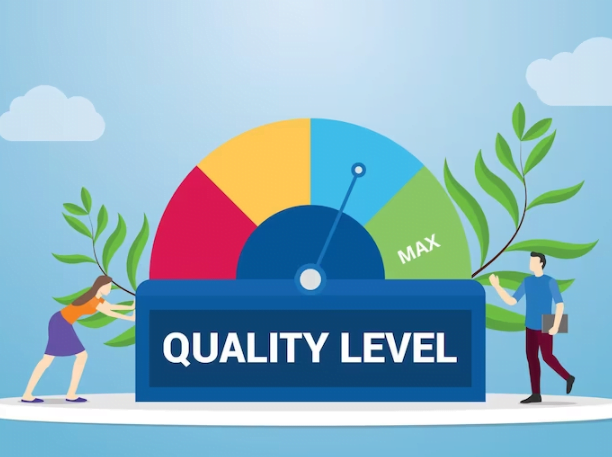
Relevant Content
Create content that speaks to the desires and standards of the audience you are targeting. Whether it’s addressing their issues, entertaining, or inspiring.
Invest in images that are compelling for an additional aesthetic appeal. Entertaining videos, eye-catching visuals, and intriguing photographs improve the viewer’s experience.
Consistency
Maintain a consistent posting schedule that does not compromise the quality of your content. Consistency builds trust.
Why Does Quality Content Matter in Organic Growth?
Your audience will pay attention and will remain engaged with good content. It motivates them to engage, share, and build a devoted fan base.
Impact of Hashtags
Hashtags act as bridges toward an additional audience for your content to grow. When properly used, hashtags grow your audience and attract people with similar interests.
Relevance
Pick hashtags that are suitable for both your audience and your content. Avoid the ones that are extremely basic or pushy.
Variety
Use several hashtags that are both popular and focused. Your visibility on social media is increased by adding relevant hashtags
Create original, branded hashtags that connect with your audience using hashtag marketing. Encouraging people to share content related to your brand using these tags.
How do Hashtags Help with Organic Growth?
Hashtags increase the probability of free engagement by making your content more visible and associating it with people who share the same interests as you.
Collaborate and Network
Collaboration is the magic potion of organic growth. Partnering with influencers or brands opens up the doors of your content to new audiences.

Cross-Promotion
Cross-promote each other’s content by sharing posts, mentioning one another, or conducting giveaways or contests together.
Influencer Partnerships
Find influencers or content creators in your niche. Collaborate on projects, co-create content, or host joint live sessions.
Collaboration grows your reach, introduces your content to new audiences, promotes mutual engagement, and builds loyalty. By working with influencers, bloggers, and other content creators in the same niche, you can achieve a larger number of audiences and build relationships with them, which can lead to more engagement. Additionally, collaboration can lead to more referrals and brand exposure that’ll lead to new audiences, hence promoting further growth of organic audience.
Educate, Entertain, and Inspire
Your content should aim to educate, entertain, or inspire your audience. Make an effort to offer value through your posts, ensuring they leave a lasting impression on your audience

Educational Content
Share information, tips, or tutorials that address your audience’s challenges or interests. Become a valuable resource.
Entertaining Content
Infuse your content with humor, stories, or entertainment. Keep your audience engaged and eager for more.
Inspirational Content
Motivate your followers with inspirational quotes, experiences from your own life, or tales of resilience and success.
Content that provides value and positively impacts your audience, will likely make them engaging and loyal to you.
Patience and Consistency
Organic growth requires persistence and time. To keep your increasing pace you must be consistent in both your efforts and content posting.

Regular Posting
Commit to a posting schedule that is consistent and best suited to your online audience.
Adapt and Evolve
Analyze your strategies and adapt your strategies as required. Stay tuned to the changes in the platform’s algorithms.
Avoid Shortcuts
Resist the temptation to buy followers or likes. True organic growth is built on authenticity and genuine connections.
Conclusion
As we conclude with our article, keep in mind that real connections and engagement are far more valuable than having a large number of followers. So avoid buying likes and followers as they are just an illusion. Establish your brand, produce high-quality content, interact sincerely, use hashtags, collaborate, inspire, educate, engage, and entertain while acknowledging patience and consistency. Build an online audience that appreciates what you do and is interested in what you do. The most important and long-lasting growth in the social media industry comes from authenticity and being sincere about what you do. Staying patient and consistent is the key element to building an organic following and seeing you on the other side.
